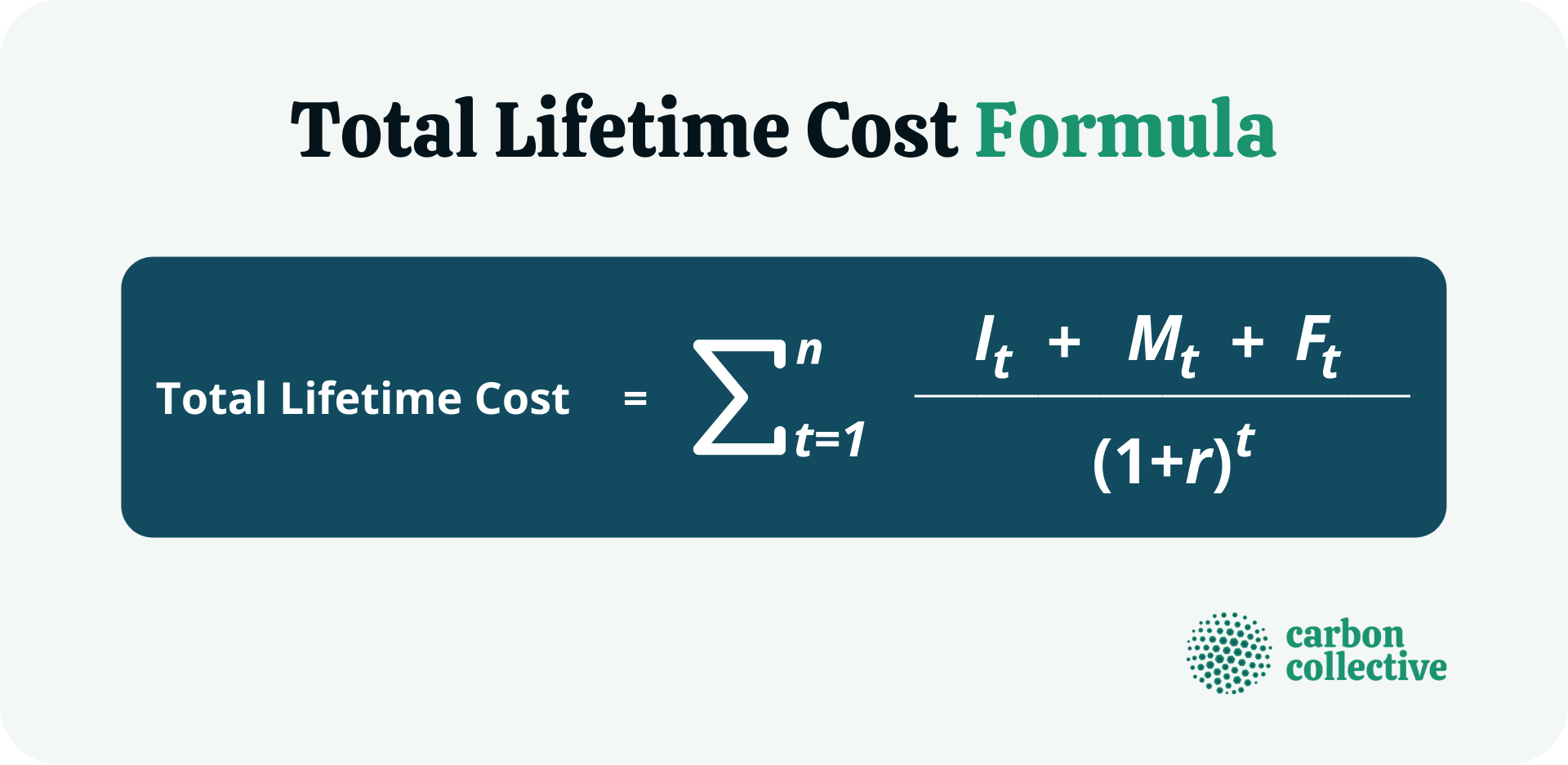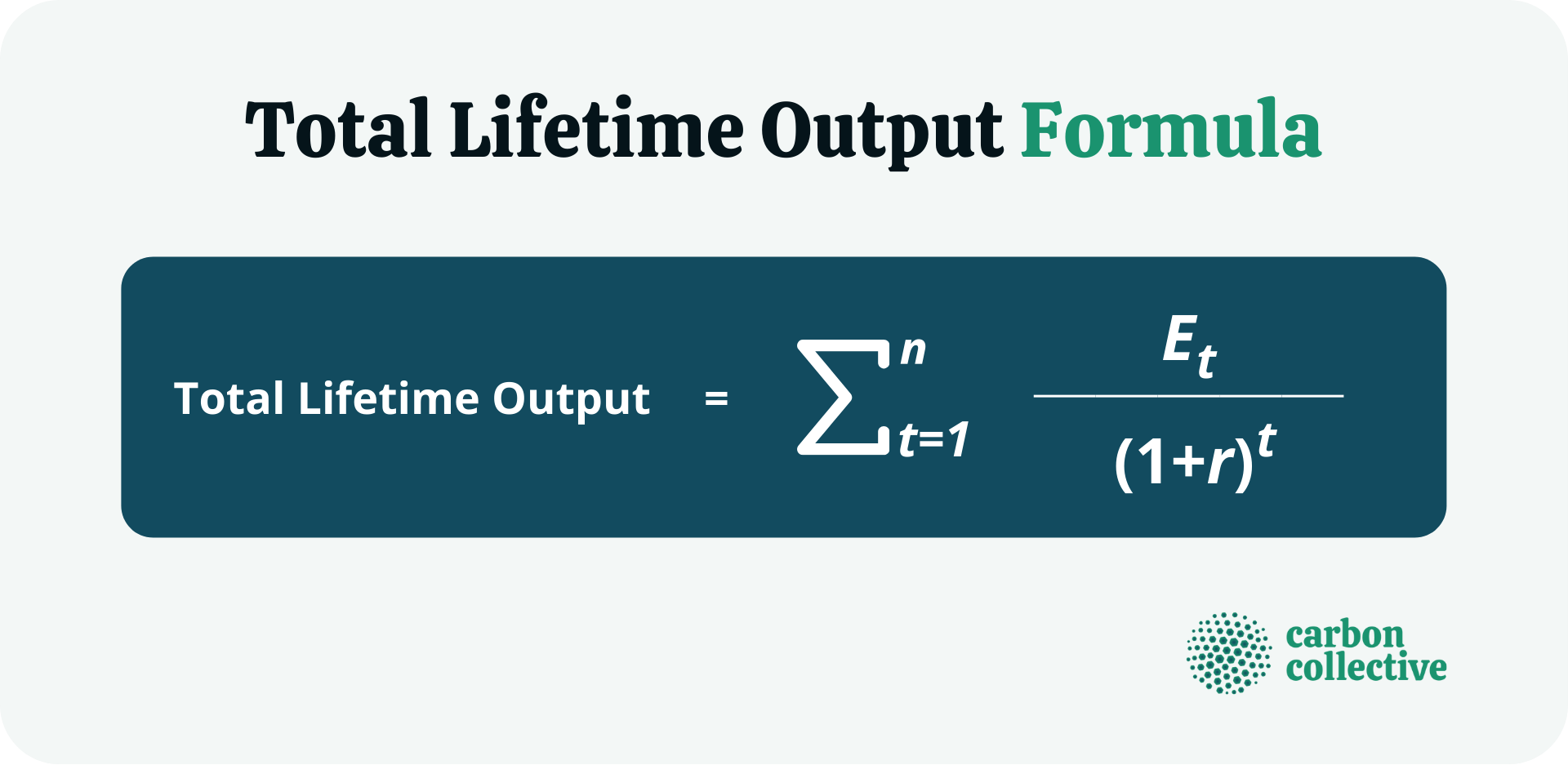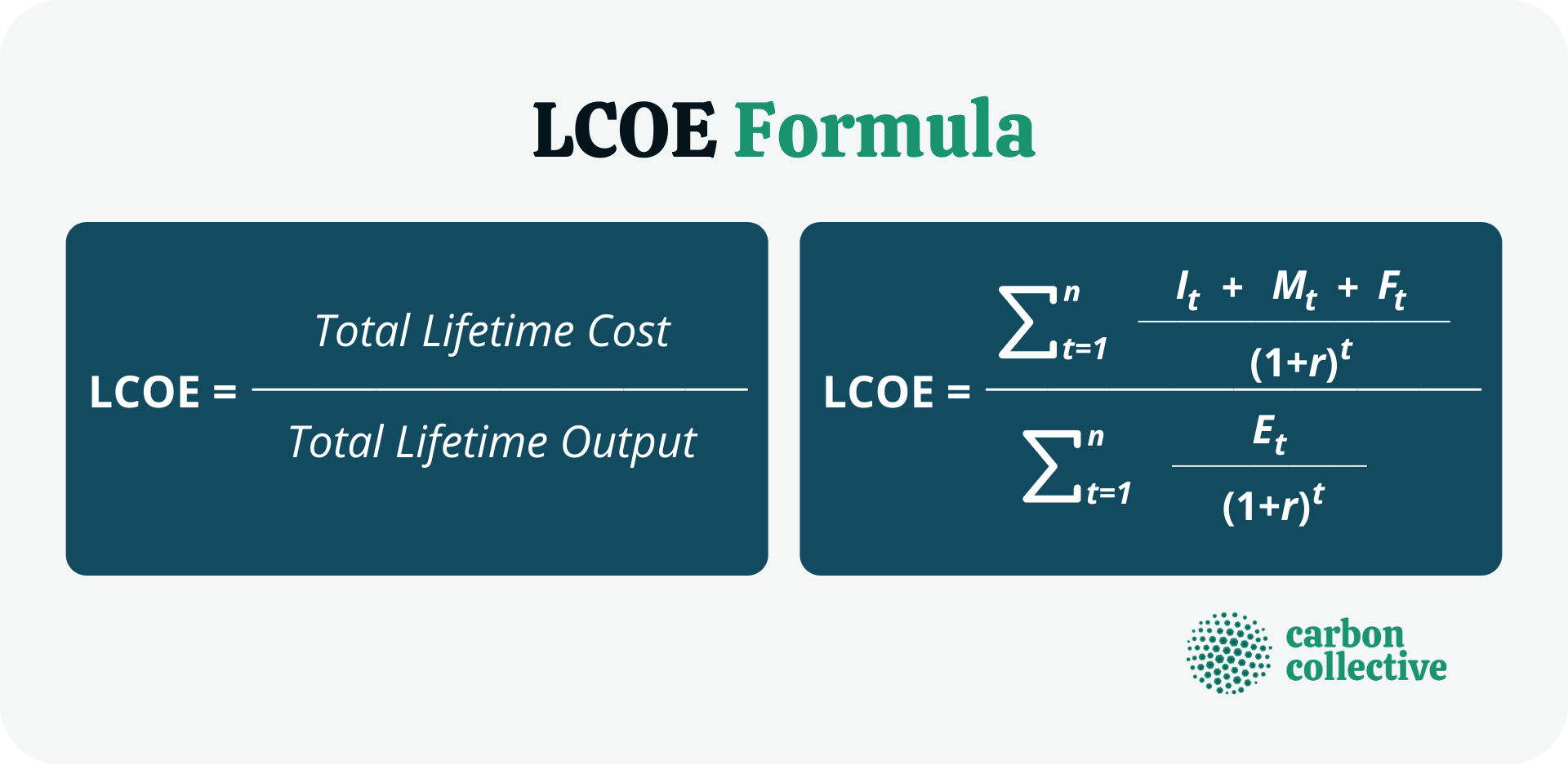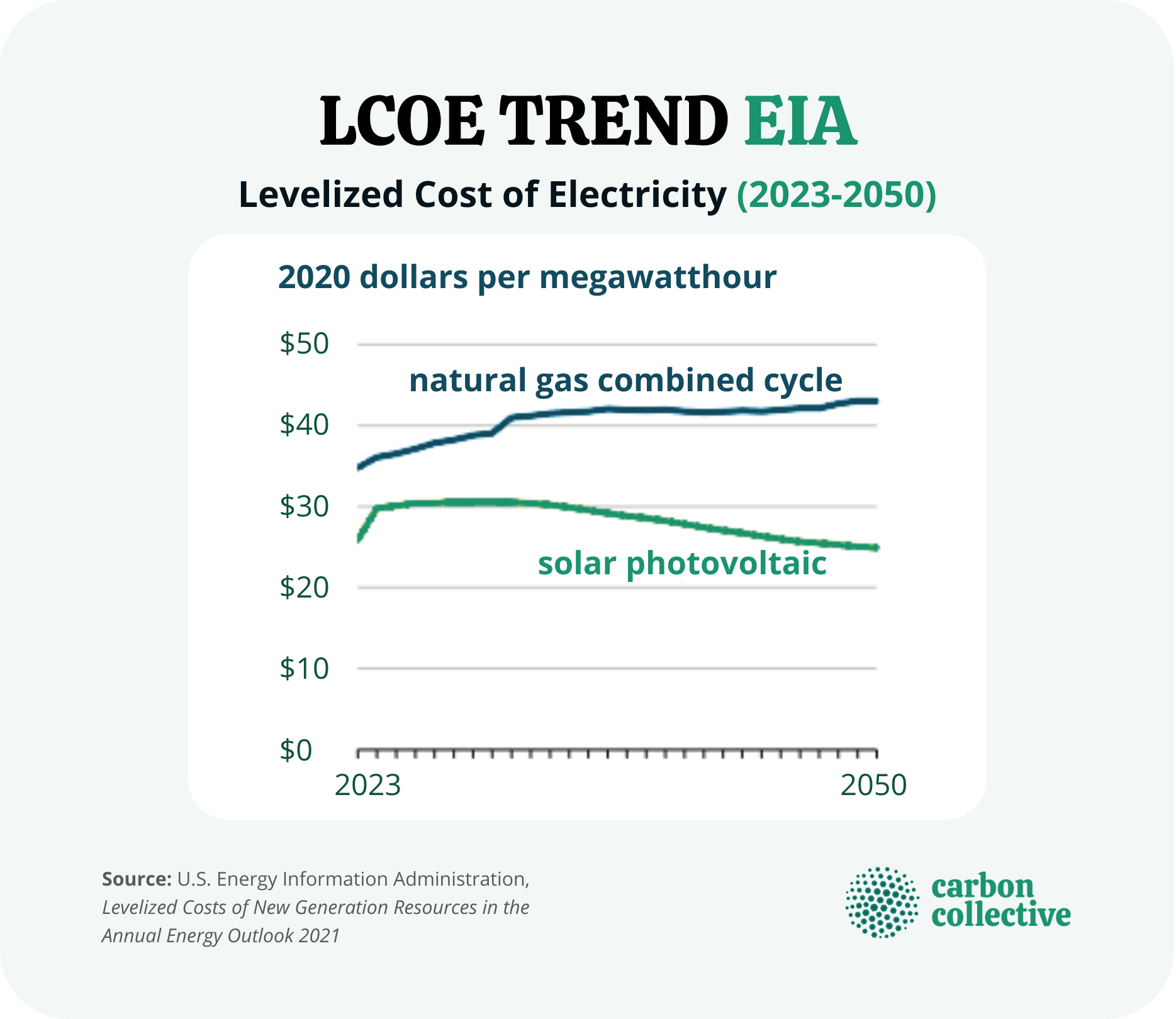Levelized Cost of Energy (LCOE) Defined
The levelized cost of energy (LCOE) is a way to compare different methods of power generation while looking into the size and lifespan of each method.
A levelized cost of energy is essentially the cost to buy electricity produced by an energy source over its lifespan. The net present value is considered when calculating LCOE.
Utilities and policymakers use levelized cost of energy analysis for several purposes, such as comparing new technologies with those already on the grid and determining whether projects require a subsidy to be economically competitive.
LCOE also determines how much money should go toward subsidies for renewable energy vs tax breaks for traditional sources.
What Is the Importance of the Levelized Cost of Energy?
The levelized cost of energy is an important metric used for investment planning and policy formation.
It is a good measure for determining how much it costs to produce electricity from different power generation sources.
It also helps policy-makers and researchers determine the cost-effectiveness of deploying technologies in the market.
It helps entities decide if a power source is competitive with other energy sources. It also allows investors to assess the profitability of an energy project or company with regard to different technologies.
Calculating the Levelized Cost of Energy
In determining whether a project will break even or be profitable, the calculation for LCOE considers two main variables.
Total Lifetime Cost
The total lifetime cost of a power-generating asset will generally include the following:
- initial cost of investment (I)
- maintenance and operations expenditures (M)
- fuel expenditures (F)

Total Lifetime Output
The total lifetime output of a power-generating asset will include the total of all electricity generated (E).

In addition to these two variables, the discount rate of the project (r) and the life of the system (n) will also be included in the calculation of LCOE.
The total lifetime cost of the energy-generating asset will then be divided by its total lifetime output. Put together, the formula for LCOE is:

Advantages of the Levelized Cost of Energy Analysis
Simplicity
LCOE is a straightforward analysis method to compare and contrast technologies in the market.
Ease of Data Analysis
Because it considers the most directly relevant data, LCOE analysis simplifies complex data into something readily understandable, which will help guide decision-making processes.
Widely Used
For these reasons, LCOE analysis is a tool used by entities for various purposes. It can help short-term planning and long-term forecasting.
Drawbacks of the Levelized Cost of Energy Analysis
Perception Bias
Because it seems simple, there can be an inherent bias in favor of technologies with high initial investments but low running costs. This means the more expensive power sources may get overlooked by people without enough knowledge or expertise.
Skewed Data
It is important to note that LCOE calculations are based on assumptions about certain factors, such as the discount rate, lifespan, and fuel costs, which help drive output one way or another.
As these assumptions vary between different analyses, they might not indicate the most accurate cost-effectiveness of each power source.
Difficult to Accurately Represent Distributed Systems
LCOE analysis is not ideal for dealing with distributed power systems, such as rooftop solar panels. It does not account for a system's unique features and can potentially skew its results when applied to them.
Trends in the Levelized Cost of Energy for Different Power Sources
As more renewable energy technologies become available or new ones are developed, LCOE analysis provides a simple way of comparing their costs in the market, which lets everyone know how these prices stack up against each other.
In 2021, the U.S. Energy Information Administration published a summary table listing levelized generation costs from different power sources across the United States.

The table shows that on average, LCOE for natural gas-fired combined-cycle plants is higher than solar photovoltaic (PV). Because of rising natural gas prices that increase plant operating costs, LCOE for natural gas-fired combined-cycle plants also increases.
As seen in the table, LCOE for solar PV will increase at the opening of 2023 and in the near term primarily because of the declining solar Investment Tax Credit (ITC). The decrease is set to move from 30% to 10% of the initial capital cost by 2024.
LCOE for solar PV will then continue to trend downward as its capital costs continue to decline over the long term.
The Bottom Line
LCOE analysis quickly determines the economic viability of different energy sources in the market.
It can also give decision-makers an idea of how their choices compare with their peers.
At the same time, LCOE analysis does have limitations and may not provide accurate results in certain situations.
For this reason, it should always be used alongside other analyses before decisions are made about which power source to invest in.
FAQs
1. What is the definition of LCOE analysis?
LCOE stands for the levelized cost of energy, defined as an estimate that includes all costs associated with building and operating a generating plant to generate electricity for a given period.
2. What are some ways in which LCOE analysis is commonly used?
LCOE analysis is commonly used to compare power sources, find the most cost-effective sources for new plants, and help with short-term planning and long-term forecasting.
3. Why do some studies show that wind energy is less costly than coal?
Some studies do not include fuel costs, so the associated expenses of wind energy can be lower. This means it looks more competitive compared with other types of energy generation where fuel costs are included and subject to variations in price on international markets.
4. What are some limitations of LCOE analysis?
LCOE analysis does not account for all factors that can affect the cost of power production. Examples include differences in initial investment, the impact on local economies, variations in installation rates, and environmental impacts.
5. What does net present value mean?
Net present value is a financial tool that reflects the time value of money and helps decision-makers compare different investments. In LCOE analysis, net present value takes the levelized cost for each year and discounts it to an equivalent current amount in dollars to account for inflation. Thus, people can compare the costs of different power sources over a certain period.
